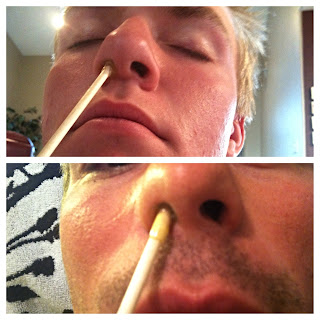1.
Anatomy: the study of the structure of the body that can be seen with the naked eye and what it is made up of; The science of the structure of organisms or of their parts.
Physiology: study of the functions or activities performed by the body's structures.
Histology: study of the structure and composition of tissue.
2. Understanding anatomy, physiology, and histology is important for estheticians so they can develop their skills and perform their work safely.
3. The basic structures of the cell are:
The nucleus: the center of a cell. It holds the DNA and proteins.
The cytoplasm: watery fluid that contains the food material necessary for cell growth, reproduction, and self repair.
The cell membrane: encloses the protoplasm and permits soluble substances to enter and leave the cell.
4. Cell metabolism is a chemical process that takes place in living organisms. Through metabolism, the cells are nourished and carry out their activities
5. The four types of tissue in the body are:
Connective tissue: supports, protects, and binds together other tissues of the body. I.e.: bone, cartilage, and ligaments.
Epithelial tissue: is a protective covering on body surfaces; for example, skin.
Muscular tissue: contracts and moves the various parts of the body.
Nerve tissue: carries messages to and from the brain and controls and coordinates all bodily functions. Nerve tissue is composed of special cells known as neurons.
6. Organs are groups of tissues designed to perform a specific function.
7. The most important organs in the body are:
Brain: controls the body.
Eyes: control vision.
Heart: circulates the blood.
Kidneys: excrete water and waste products.
Lungs: supply oxygen to the blood.
Liver: removes toxic products of digestion.
Skin: forms external protective covering of the body.
Stomach and intestines: digest food.
8. The 11 main body systems are:
Circulatory: controls the steady circulation of blood through the body by means of the heart and blood vessels.
Digestive: changes food into nutrients and wastes.
Endocrine: affects the growth, development, sexual activities, and health of the entire body.
Excretory: purifies the body by the elimination of waste matter.
Integumentary: serves as a protective covering and helps the body in regulating the body's temperature. Consists of skin, accessory organs such as oil sweat glands, sensory receptors, hair, and nails.
Muscular: covers, shapes, and supports the skeleton tissue. Also contracts and moves various parts of the body.
Nervous: controls and coordinates all other systems and makes them work harmoniously and efficiently.
Reproductive: responsible for processes by which plants and animals produce offspring.
Respiratory: enables breathing, supplying the body with oxygen, and eliminating carbon dioxide as a waste product.
Skeletal: physical foundation of the body.
Lymphatic or immune: protects the body from disease by developing immunities and destroying disease-causing microorganisms.
9. The primary functions of the skeletal system are to:
- Give shape and support to the body.
- Protect various internal structures and organs.
- Serves as attachments for muscles and act as levers to produce body movement.
- Help produce both white and red blood cells.
- Store most of the body's calcium supply as well as phosphorus, magnesium, sodium.
10. The three types of muscle tissue found in the body are:
Striated muscles: skeletal or voluntary muscles that are attached to the bones and make up a large percentage of body mass.
Non-striated muscles: involuntary, visceral, or smooth muscles. Function automatically without conscious will. These muscles are found in the digestive and circulatory systems.
Cardiac muscle: the involuntary muscle that makes up the heart.
11. The three types of nerves found in the body are:
Sensory or afferent nerves: carry impulses or messages from the sense organs to the brain. Where sensations of touch, cold, heat, sight, hearing, taste, smell, pain, and pressure are experienced.
Motor or efferent nerves: carry impulses from the brain to the muscles. The transmitted impulses produce movement.
Mixed nerves: contain both sensory and motor fibers and have the ability to send and receive messages.
12. The three types of blood vessels found in the body are:
Arteries: are thick-walled, muscular, flexible tubes that carry oxygenated blood away from the heart to the capillaries.
Capillaries: are minute, thin-walled blood vessels that connect the smallest arteries to the veins. They bring nutrients to the cells and carry away waste materials.
Veins: are thin-walled blood vessels that are less elastic than arteries. They carry blood containing waste products from the various capillaries back to the heart.
13. The components of blood are:
Red blood cells: produced in the red bone marrow. They contain hemoglobin, a complex iron protein that gives the blood its bright red color. The function of red blood cells is to carry oxygen to the body cells.
White blood cells: perform the function of destroying disease causing germs.
Platelets: contribute to the blood clotting process, which stops bleeding.
Plasma: the fluid part of the blood in which the red and white blood cells and platelets flow. It is about 90% water and contains proteins, sugars, and oxygen. The main function of plasma is to carry food and secretions to the cells and to take carbon dioxide away from the cells.
14. The two types of glands that make up the endocrine system are:
Exocrine glands or duct: sweat and oil glands of the skin be long to this group.
Endocrine glands or ductless: release secretions called hormones directly into the bloodstream.
15. The organs in the excretory system are:
Kidneys: excrete urine.
Liver: discharges bile.
Skin: eliminates perspiration.
Large intestine: eliminates decomposed and undigested food.
Lungs: exhale carbon dioxide.































.jpg)
.jpg)



